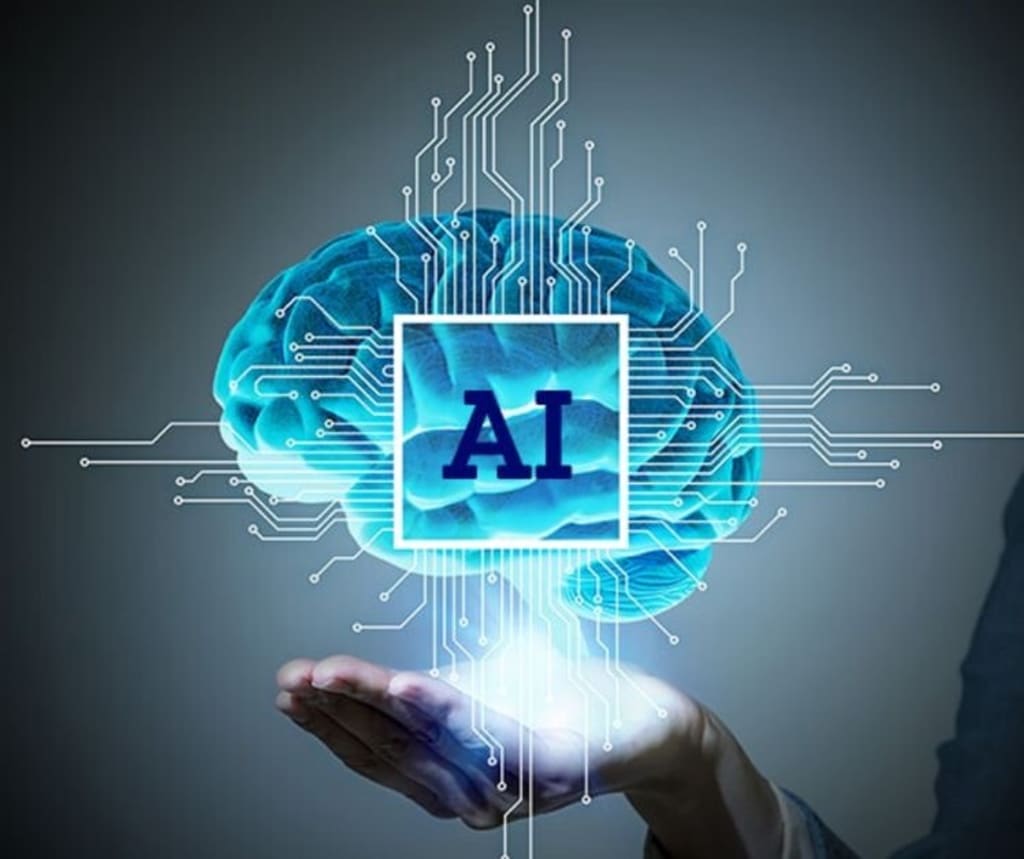
Introduction: Artificial Intelligence (AI) technology refers to the various tools and techniques used to create and implement AI systems. Some examples of AI technology include.
Machine Learning:
Machine Learning (ML) is a subset of Artificial Intelligence (AI) that allows systems to learn from data and improve their performance without being explicitly programmed. It is based on the idea that machines can learn from experience and make predictions or decisions without being explicitly programmed to do so.
There are several types of machine learning;
Supervised Learning: This type of ML involves training a model on a labeled dataset, where the correct output is provided for each input. The model is then able to make predictions on new, unseen data. Examples include image classification, speech recognition and email spam filtering.
Unsupervised Learning: This type of ML involves training a model on an unlabelled dataset, where the correct output is not provided. The model must find patterns or structure in the data on its own. Examples include anomaly detection and cluster analysis.
Reinforcement Learning: This type of ML involves training a model to make decisions in an environment by receiving feedback in the form of rewards or punishments. It is used in applications such as game playing and robotics.
Deep Learning: This is a subset of Machine Learning which uses Deep Neural Networks, which are composed of multiple layers of artificial neurone. It is used in many applications, particularly image and speech recognition, natural language processing, and machine vision.
Machine learning algorithms can be used in a wide range of applications, such as natural language processing, image and speech recognition, self-driving cars, and medical diagnosis.
It has become a very important technology with the rise of big data and the increasing availability of computational resources. The field of machine learning is constantly evolving and new algorithms and techniques are being developed all the time.
Natural Language Processing (NLP):
Natural Language Processing (NLP) is a subset of Artificial Intelligence (AI) that deals with the interaction between computers and human languages. It involves the use of computational techniques to analyse, understand, and generate the languages that humans use to communicate with each other.
NLP is used in a wide range of applications, such as:
Language Translation: NLP techniques are used to translate text from one language to another, allowing people to communicate with each other in different languages.
Text-to-Speech and Speech Recognition: NLP is used to convert text into speech, and to recognise speech and convert it into text. This technology is used in applications such as virtual assistants, dictation software, and speech-enabled devices.
Sentiment Analysis: NLP is used to analyse text and determine the sentiment or emotional tone of the text. It is used in applications such as social media monitoring, customer service, and market research.
Chatbots and Virtual assistants: NLP enables natural language interaction between human and machine, which is the basis of chatbot and virtual assistant technology.
Text summarisation: NLP is used to summarise large chunks of text into a shorter version, making it more manageable to read and understand.
NLP techniques are based on a combination of linguistics, computer science, and statistics. The field of NLP is constantly evolving and new techniques are being developed all the time, such as deep learning and neural networks which have greatly improved the performance of NLP models in recent years.
With the increasing amount of text data available, NLP has become an important technology with many potential applications in industries such as healthcare, finance, and marketing.
Computer Vision:
Computer Vision is a subset of Artificial Intelligence (AI) that deals with the ability of computers to interpret and understand visual information from the world, such as images and videos. It involves the use of computational techniques to analyze and understand visual data, in order to extract meaningful information from it.
Computer Vision is used in a wide range of applications, such as:
Image and Video Analysis: Computer Vision is used to analyze and understand the content of images and videos, such as recognizing objects, faces, and scenes, and detecting motion and changes.
Autonomous Systems: Computer Vision is used in autonomous systems such as self-driving cars, drones, and robots, to enable them to navigate and understand their environment.
Surveillance and Security: Computer Vision is used in surveillance systems to monitor and analyze video feeds, in order to detect suspicious activity and alert security personnel.
Augmented Reality and Virtual Reality: Computer Vision is used in augmented reality and virtual reality systems to track and align virtual objects with the real-world environment.
Medical Imaging: Computer Vision is used in medical imaging to assist doctors in diagnosing diseases and identifying abnormalities.
Computer Vision techniques are based on a combination of computer science, mathematics, and engineering. The field of Computer Vision is rapidly evolving and new techniques are being developed all the time, such as deep learning and neural networks.
Which have greatly improved the performance of Computer Vision models in recent years. With the growing amount of visual data available, Computer Vision has become an important technology with many potential applications in various industries.
Robotics:
Robotics is a subfield of Artificial Intelligence (AI) that deals with the design, construction, operation, and use of robots. It involves the use of computational techniques and technologies to create intelligent machines that can perform tasks autonomously or with minimal human supervision.
Robotics is used in a wide range of applications, such as:
Industrial Automation: Robotics is used in manufacturing and assembly lines to automate repetitive and dangerous tasks, increasing efficiency and safety.
Agriculture: Robotics is used in agriculture for tasks such as planting, harvesting, and monitoring crops.
Healthcare: Robotics is used in healthcare for tasks such as surgery, rehabilitation, and patient care.
Transportation: Robotics is used in transportation for tasks such as self-driving cars and drones.
Space Exploration: Robotics is used in space exploration for tasks such as landing, roving, and sampling.
Robotics involves a combination of various fields such as mechanical engineering, electrical engineering, computer science, and control systems. The field of Robotics is rapidly evolving and new technologies are being developed all the time, such as machine learning, computer vision, and natural language processing, which have greatly improved the performance of robotic systems.
The integration of AI and Robotics is allowing robots to not only perform repetitive tasks but also make decisions based on the task and the environment. With the advancements in AI and Robotics, it is expected that robots will play an increasingly important role in various industries in the future.
Expert Systems:
Expert systems, also known as knowledge-based systems, are a type of Artificial Intelligence (AI) that mimic the decision-making abilities of a human expert in a specific domain. They are designed to solve problems and make decisions based on a set of rules and knowledge that has been encoded into the system.
Expert systems are used in a wide range of applications, such as:
Medical Diagnosis: Expert systems are used in the medical field to assist doctors in diagnosing diseases and identifying abnormalities.
Financial Analysis: Expert systems are used in finance to assist in investment decision-making and portfolio management.
Legal Analysis: Expert systems are used in the legal field to assist in legal research and case analysis.
Industrial Control: Expert systems are used in industrial control to optimise the performance of production processes.
Customer Service: Expert systems are used in customer service to assist in answering customer queries and providing recommendations.
Expert systems are typically built using a rule-based approach, where a set of if-then rules are encoded into the system to represent the knowledge and decision-making abilities of the expert. The rules are based on the knowledge and experience of the expert in a specific domain.
Expert systems were some of the first AI systems to be developed and were popular in the 1980s and 1990s. With the advancements in other AI techniques such as machine learning, expert systems have become less popular but they still have a niche use case in certain domains.
Neural Networks:
Neural Networks are a type of Artificial Intelligence (AI) that are modeled after the structure and function of the human brain. They are composed of interconnected nodes, or artificial neurone, that process and transmit information.
Neural networks are used in a wide range of applications, such as:
Image and Voice Recognition: Neural networks are used to identify objects, people, and speech in images and audio.
Language Processing: Neural networks are used to understand and generate human language, such as in natural language processing and machine translation.
Predictive Modeling: Neural networks are used to make predictions and analyse data, such as in stock market forecasting and weather prediction.
Robotics: Neural networks are used in robotics for tasks such as navigation, grasping and manipulation.
Gaming: Neural networks are used in gaming for tasks such as game playing, computer vision and natural language processing.
Neural networks are trained using large sets of labeled data, and they can learn to identify patterns and relationships in the data. They can be used for both supervised and unsupervised learning.
The most common type of neural network is the feedforward neural network, which consists of layers of interconnected artificial neurons that process and transmit information. There are also more complex types of neural networks such as Convolutional Neural Networks (CNN), Recurrent Neural Networks (RNN), and Generative Adversarial Networks (GAN).
Neural Networks have become popular in recent years with the availability of powerful computers and large amounts of data, and they have been used to achieve state-of-the-art performance in many AI tasks.
"I think we should be very careful about artificial intelligence. If I had to guess at what our biggest existential threat is, it's probably that. So we need to be very careful."-Elon Musk, the CEO of SpaceX and Tesla






Comments
There are no comments for this story
Be the first to respond and start the conversation.